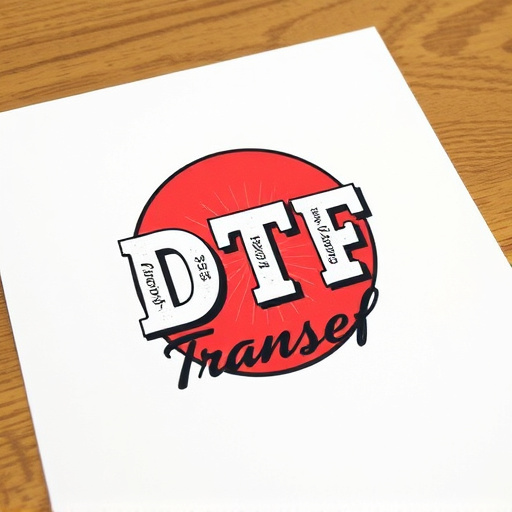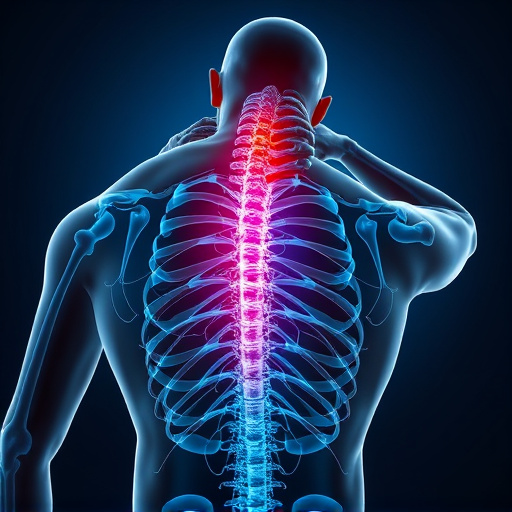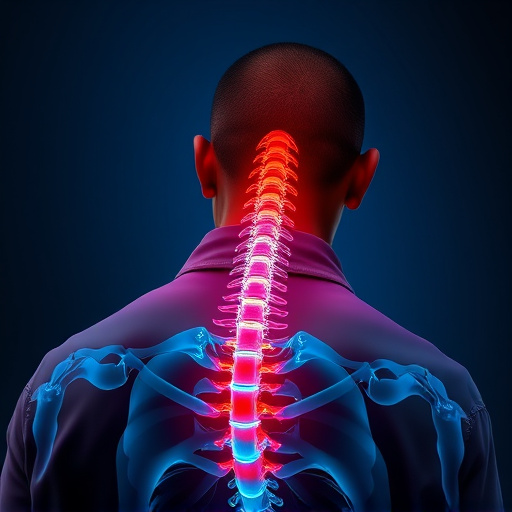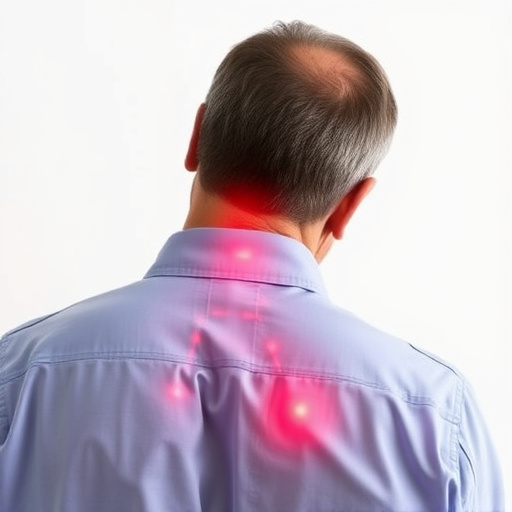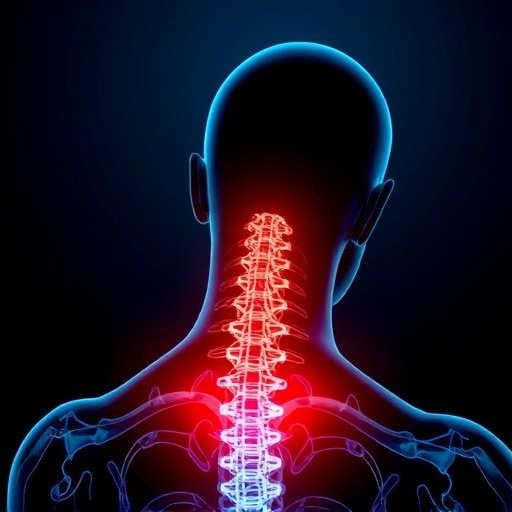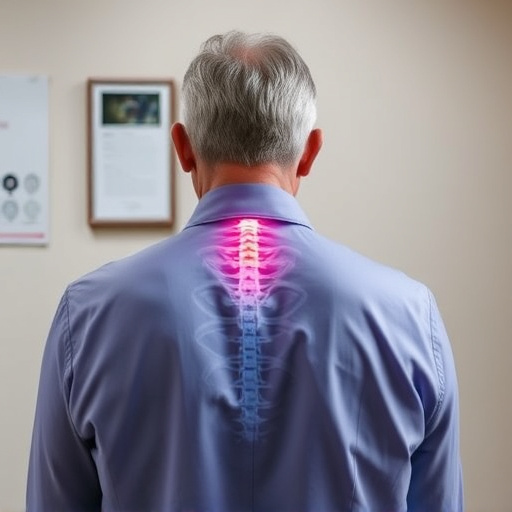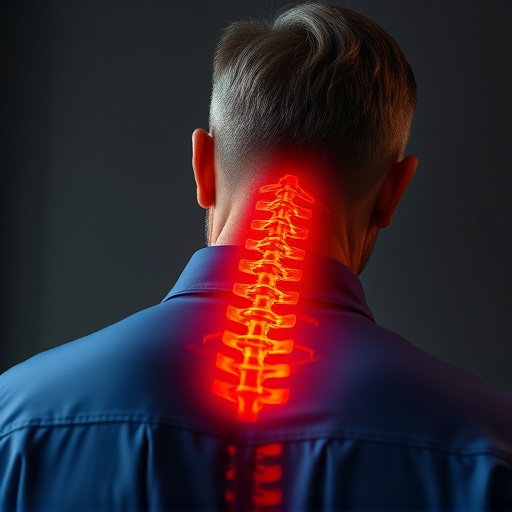Neck and back pain, affecting diverse demographics, arises from causes like poor posture, injuries, stress, obesity, and medical conditions. A holistic approach, including exercise, stress management, and balanced diet, offers natural neck and back pain relief. Non-pharmacological treatments like acupuncture, chiropractic care, and physical therapy target root causes for long-term benefits. Advanced interventions such as spinal injections, nerve blocks, and stimulation procedures are available for severe chronic pain. Preventative measures include tailored exercise, core strengthening, flexibility training, diet, hydration, good posture, and weight management to avoid persistent neck and back pain. Technology like wearable sensors, apps, VR therapy enhances relief in today's digital era.
“Experience lasting neck and back pain relief with our comprehensive guide. Uncover a deep understanding of chronic pain causes and triggers, from postural issues to muscle strain. Explore effective lifestyle changes for holistic well-being, including exercise, diet, and stress management. Delve into non-pharmacological treatments like acupuncture and chiropractic care, offering natural remedies for persistent discomfort. Discover when medical interventions, such as advanced therapies, become essential. Learn preventative measures to fortify your body and embrace innovative technology enhancing sustainable pain management.”
- Understanding Neck and Back Pain: Causes and Common Triggers
- Lifestyle Changes for Long-Term Relief: Adopting a Holistic Approach
- Non-Pharmacological Treatment Options: Exploring Natural Remedies
- Medical Interventions: When and Why to Consider Advanced Treatments
- Preventative Measures: Fortifying Your Body for Future Protection
- Technology and Innovation: Modern Solutions for Sustainable Pain Management
Understanding Neck and Back Pain: Causes and Common Triggers
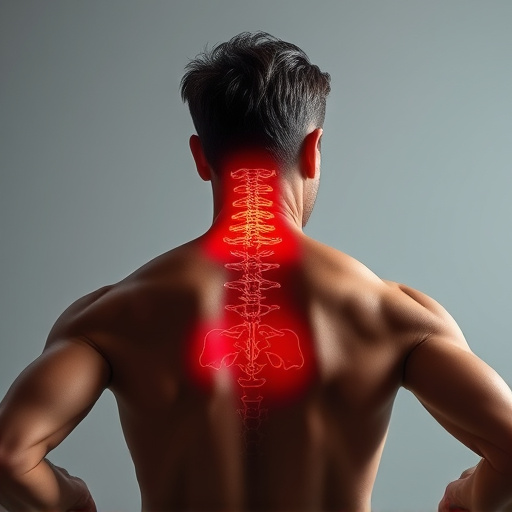
Neck and back pain is a prevalent issue affecting individuals across various demographics. Understanding its causes and triggers is paramount in achieving effective long-term neck and back pain relief. Musculoskeletal disorders, including neck and back pain, can arise from a multitude of factors such as poor posture, repetitive motions, or sudden injuries. For instance, prolonged periods of sitting or incorrect lifting techniques can lead to strain on the muscles, ligaments, and nerves in the neck and back region.
Common triggers include stress, which can cause tense muscles and lead to chronic pain over time; obesity, adding extra pressure on the spine; and certain medical conditions like arthritis or herniated discs. Recognizing these triggers is a crucial first step towards managing and alleviating neck and back pain effectively.
Lifestyle Changes for Long-Term Relief: Adopting a Holistic Approach
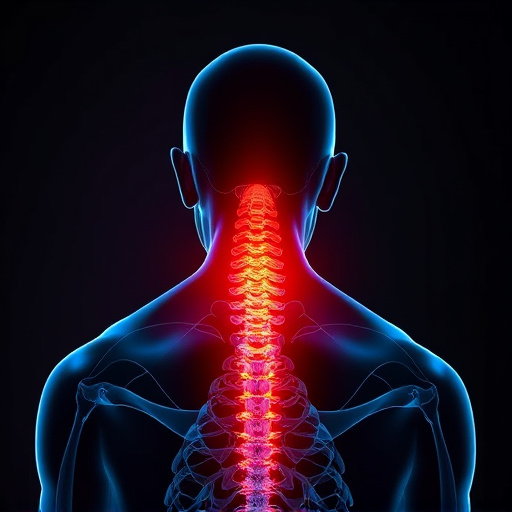
Many people struggling with persistent neck and back pain often seek long-term solutions that go beyond traditional medical treatments. Adopting a holistic approach to pain management is a game-changer for many individuals aiming for lasting relief. This involves making lifestyle changes that cater to various aspects of health, recognizing the interconnectedness of the mind and body in the context of pain.
For instance, incorporating regular exercise tailored to one’s needs can significantly improve flexibility, strengthen muscles, and reduce tension, offering a natural neck and back pain relief method. Stress management techniques such as meditation or yoga also play a crucial role, as stress often exacerbates physical discomfort. Additionally, maintaining a balanced diet ensures the body receives essential nutrients to support overall health and healing. These lifestyle modifications are powerful tools that, when combined with professional medical advice, can lead to effective, long-lasting pain relief.
Non-Pharmacological Treatment Options: Exploring Natural Remedies
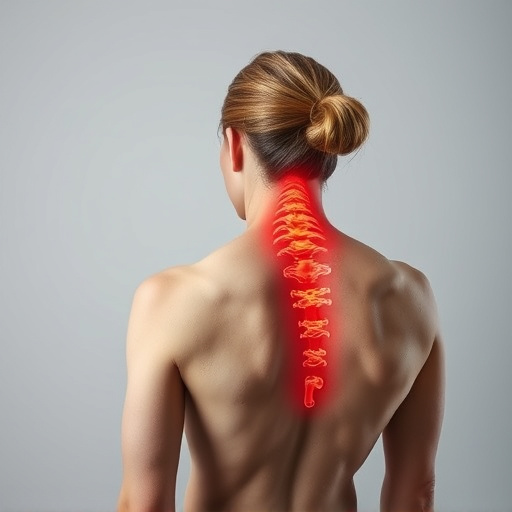
Many people suffering from persistent neck and back pain often turn to non-pharmacological treatment options, embracing natural remedies as a way to find lasting relief. This approach not only provides an alternative to medications but also promotes overall well-being and self-care. Techniques such as acupuncture, chiropractic care, and physical therapy are gaining recognition for their effectiveness in managing chronic pain.
Acupuncture, for instance, involves inserting thin needles into specific points on the body to stimulate natural healing responses. Chiropractic care focuses on adjusting the spine to reduce pressure on nerves, while physical therapy uses exercises and manual therapy to improve strength, flexibility, and posture, all of which can contribute to neck and back pain relief. These non-pharmacological methods offer a holistic approach, addressing the root causes of pain rather than just masking symptoms, ensuring long-term benefits for individuals seeking effective solutions beyond traditional medications.
Medical Interventions: When and Why to Consider Advanced Treatments
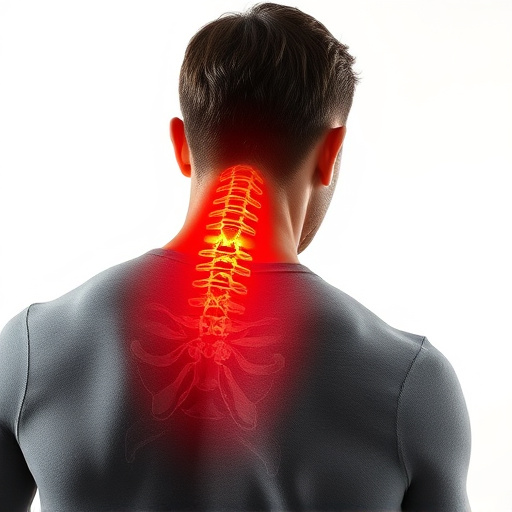
Chronic or long-term neck and back pain can significantly impact a person’s quality of life, making it essential to consider various treatment options. While over-the-counter medications and physical therapy are often the first lines of defense, there comes a time when more advanced medical interventions may be necessary for effective pain relief. These treatments should be considered when conservative methods fail or when the pain is severe and persistent.
Advanced medical treatments for neck and back pain include various procedures like spinal injections, nerve blocks, and even surgical options. Spinal cord stimulation, for instance, has shown promise in managing chronic pain. These interventions are typically recommended by healthcare professionals after a thorough assessment, taking into account the duration and intensity of the pain, as well as the patient’s overall health and response to previous treatments.
Preventative Measures: Fortifying Your Body for Future Protection
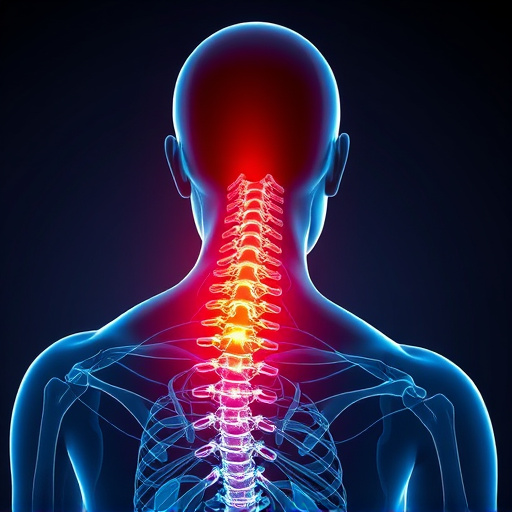
Preventative Measures play a pivotal role in achieving lasting neck and back pain relief. Fortifying your body involves adopting a proactive approach to health, focusing on lifestyle adjustments that build resilience against future injuries or conditions leading to chronic pain. Regular exercise, tailored to individual needs, is a cornerstone of prevention. Strengthening core muscles, improving flexibility, and engaging in low-impact activities like swimming or yoga can significantly reduce the risk of strain and injury, promoting overall well-being.
Nutrition also emerges as a powerful tool for neck and back pain relief. A balanced diet rich in vitamins, minerals, and anti-inflammatory foods supports tissue repair and reduces inflammation. Staying hydrated, maintaining a healthy weight, and avoiding excessive stress on the spine through proper posture and ergonomics at work or home are equally crucial. By integrating these preventative measures into daily life, individuals can protect their bodies, promote mobility, and forestall the onset of persistent neck and back pain.
Technology and Innovation: Modern Solutions for Sustainable Pain Management
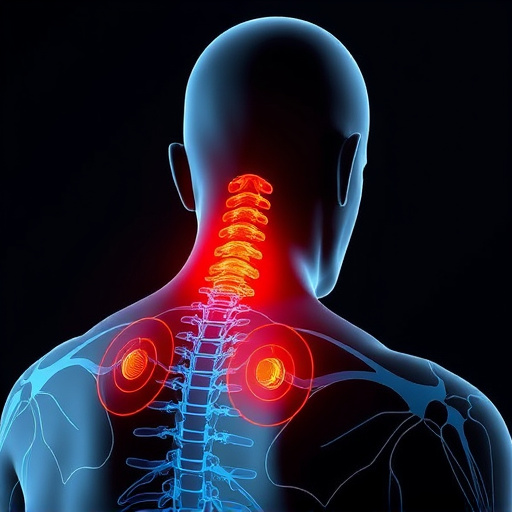
In today’s digital era, technology and innovation have emerged as powerful tools in the quest for long-term neck and back pain relief. Advanced solutions such as wearable sensors and mobile applications are revolutionizing the way we monitor and manage pain. These devices can track movement, posture, and physiological indicators, providing valuable data to individuals and healthcare professionals. By analyzing this data, users can identify triggers, adjust their activities, and adopt preventative measures to alleviate chronic neck and back pain.
Moreover, virtual reality (VR) therapy has gained traction as a novel approach to managing pain. VR offers immersive experiences that redirect attention away from physical discomfort, effectively reducing perceived pain levels. This non-invasive method has shown promise in treating various conditions, including post-operative pain and chronic lower back pain. As these technologies continue to evolve, they hold immense potential for sustainable neck and back pain relief, enhancing quality of life for those affected by such ailments.



